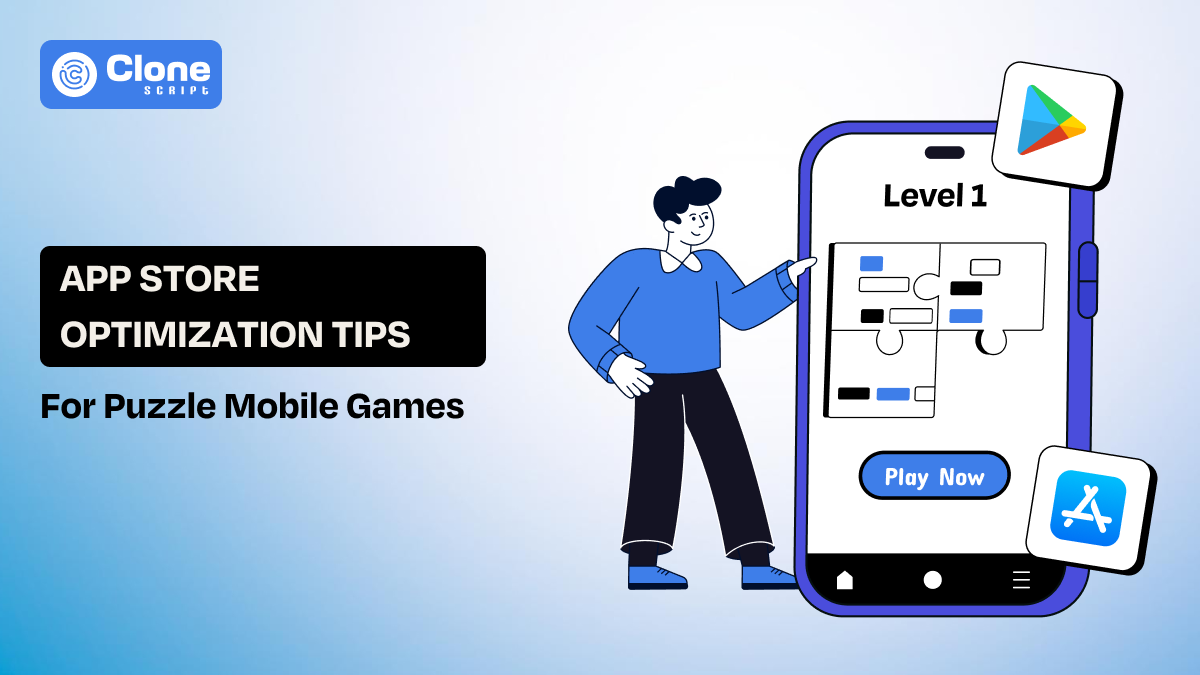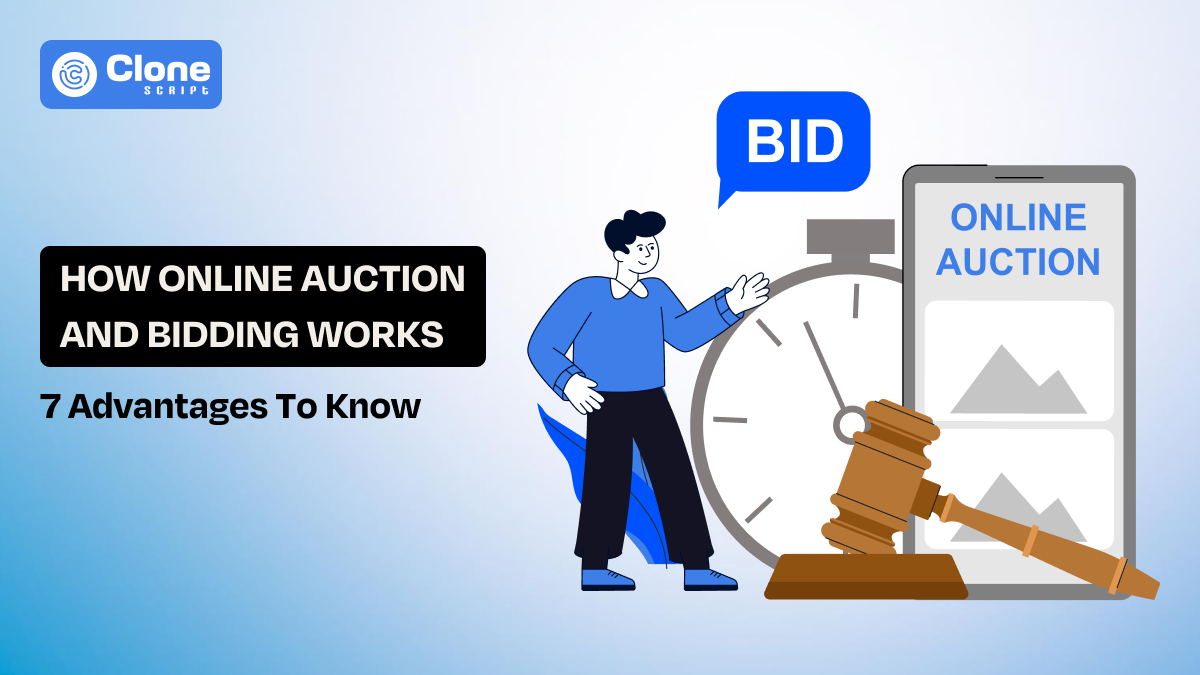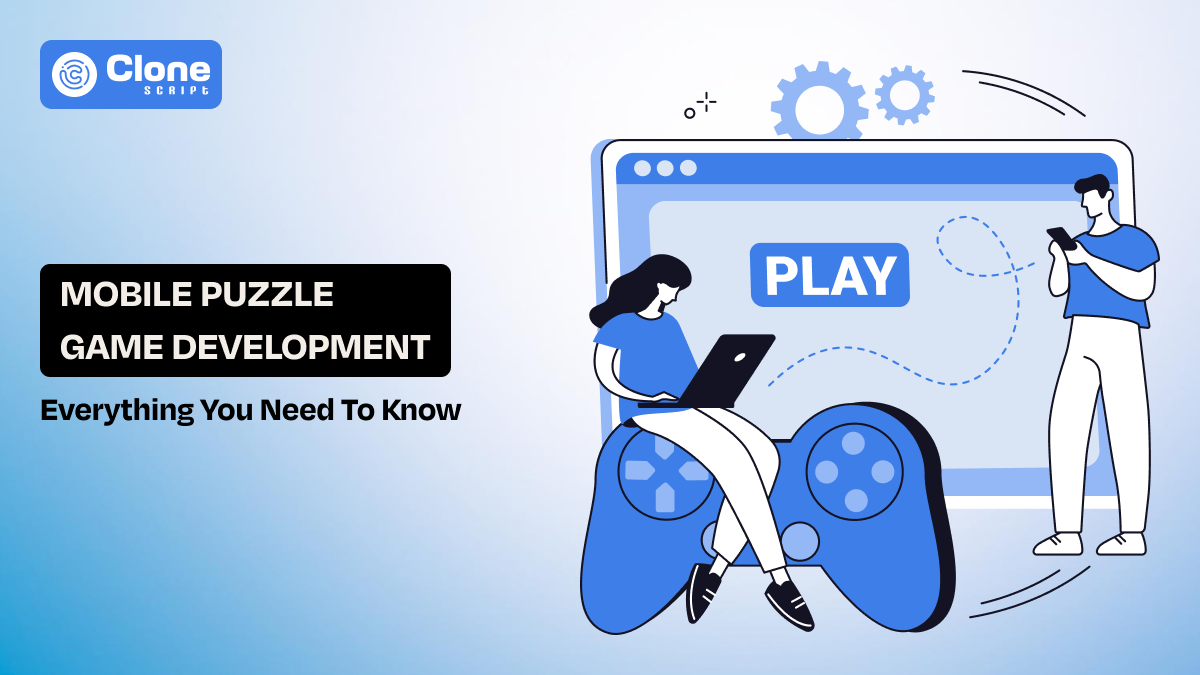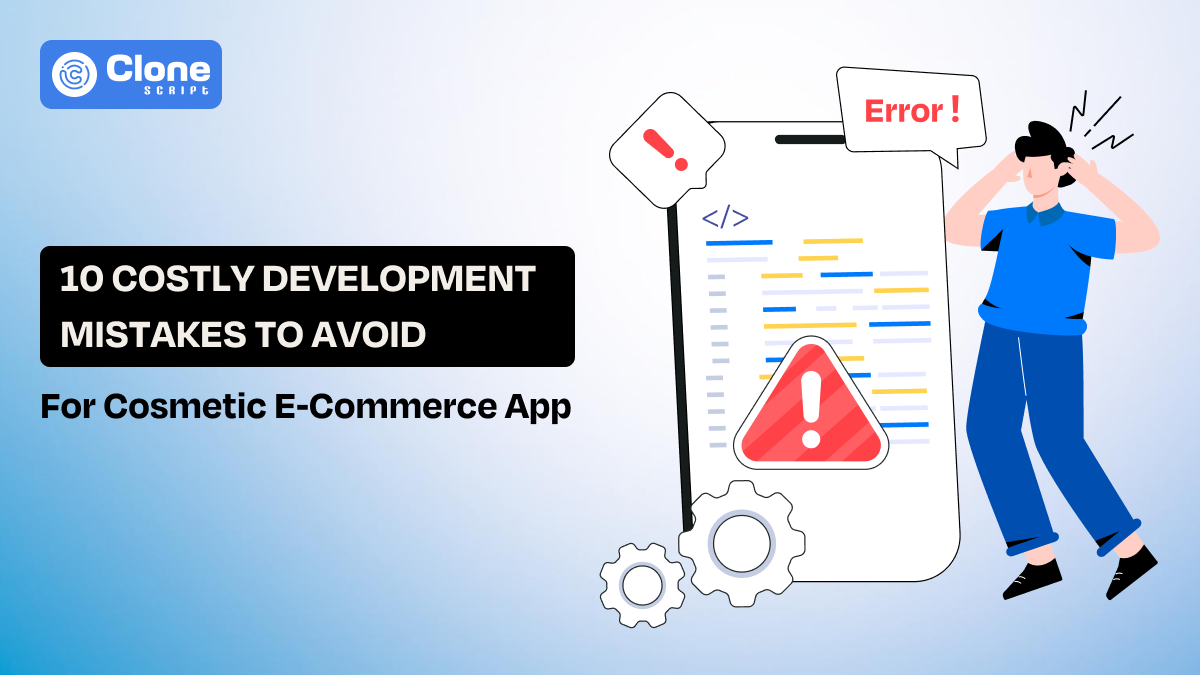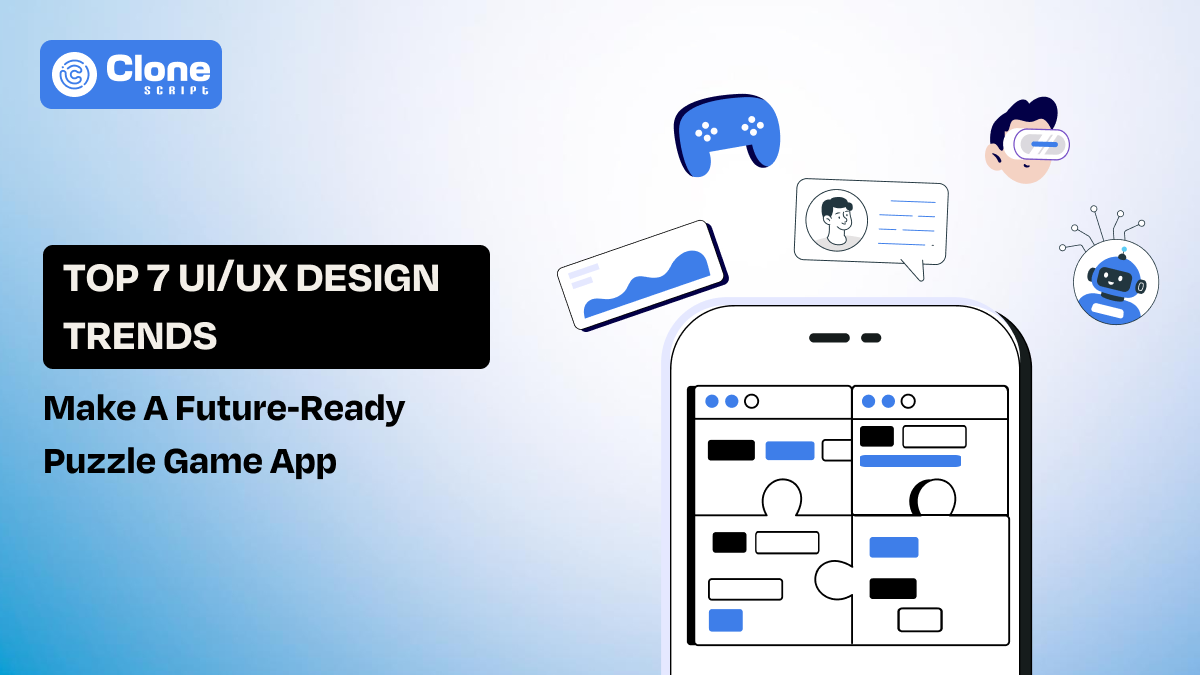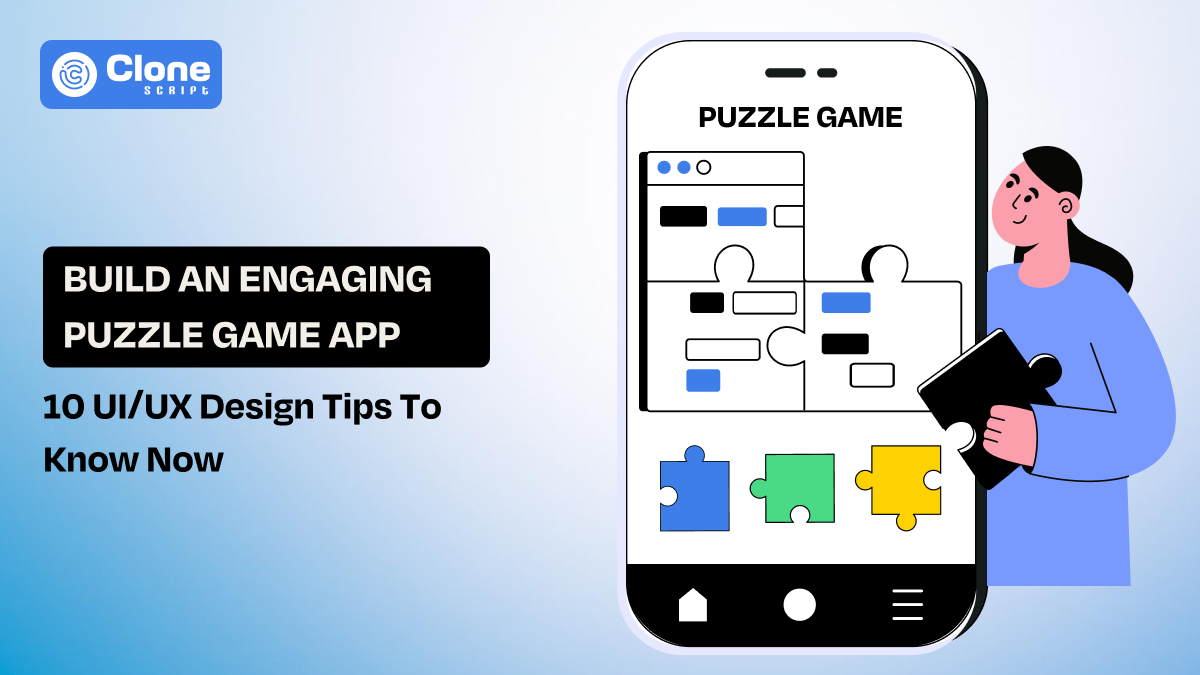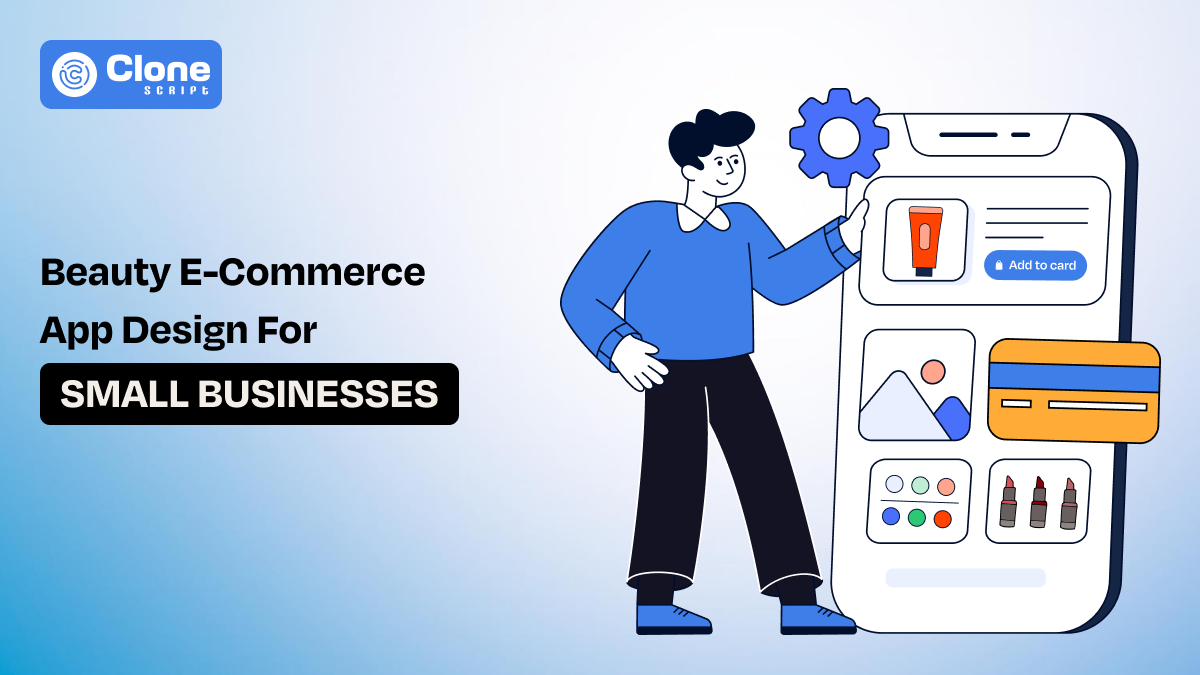7 App Store Optimization (ASO) Tips for Puzzle Games to Follow
Did you know? Over the last 3 years, 97% of mobile gaming apps have failed, and 3704 games have 1 million downloads. For the highly competitive Puzzle genre, being one of the most popular and highest-grossing categories, obscurity is an even greater threat. The only way is to strategically optimize the game listing for the Play Store.
In today’s competitive gaming market, your puzzle game’s success depends not just on great gameplay but on how discoverable it is. Players can’t fall in love with your creation if they never find it. As simple as that.
That’s where ASO for puzzle games comes in. In this article, we will talk about the most used strategies to make sure the app will be got more downloads, reviews, and player engagement.
What is App Store Optimization?
App Store Optimization (ASO) is the process of improving your app’s visibility in app store search results, similar to SEO but for apps. It involves optimizing various elements like the title, description, keywords, visuals, and ratings to increase organic downloads and conversion rates.
ASO is not just a marketing technique. It’s a product and business strategy.
In other words, App Store Optimization is the art of positioning your app as the go-to choice for players seeking a satisfying and engaging experience. It helps your game reach new, high-quality audiences, establishes immediate trust and credibility. This ensures a steady, cost-effective flow of organic downloads, reducing heavy reliance on paid acquisition on social media.
Now, let’s see what the core reasons are to invest in ASO and get an advantage from it.
Why You Need App Store Optimization for Your Puzzle Game?
With thousands of new games entering app stores every month, puzzle games face tough competition. According to Sensor Tower's latest reports, puzzle games are a massive market, generating around $10 billion in global in-app purchase revenue in 2023, with expectations for that figure to rebound and grow in 2024.
Effective mobile game ASO bridges that gap by:
-
Improving visibility among genre-specific searches. By ranking for relevant keywords, your game has a greater chance of appearing in the Top 10 search results, where most organic downloads occur.
-
Boosting conversion rates through optimized visuals and interest-creating messaging. Once they find your game, they will click on the listing and check the tutorial videos, images, and app description.
-
Increasing user retention by setting clear, accurate user expectations. High-converting ASO visuals and descriptions must faithfully represent the actual gameplay and experience, leading to higher Day 1 and Day 7 retention rates.
-
Reducing ad spend by gaining organic traffic. A professional app store optimization brings leads directly from the Play Store, and it’s a win-win situation for your new game.
In short, strong ASO for puzzle games offers the holy trinity of success in mobile gaming: the game gets found, downloaded, and remembered to recommend to friends and others.
It’s okay to have an ASO correctly, but how to do it?
The answer is in the strategies and tips.
Your ASO Success Roadmap: Top 7 Strategies for Puzzle Games
These tips apply whether you are optimizing a match-3, hidden object, logic, or word puzzle game, and are essential for securing a sustainable rank.
1. Do Genre and Competitor Research First.
Before optimizing your puzzle game, study what’s already working in your niche.
Competitor research and analysis are the most important in product development. Mobile gaming is no exception here.
Identify top-ranking puzzle games and analyze their:
-
Keywords: See what kind of queries are frequently and naturally used in the app’s content. Give more weightage to keywords for getting chances for an organic ranking boost.
-
App titles and subtitles: Analyze the competitive use of keyword-rich branding and the balance between searchability and emotional appeal.
-
Screenshots and preview videos: These are the visual elements of a game where people see what type of experience they can feel once they download the app. Optimize the images and videos well and keep the surprising fact secret to amaze users.
-
Review patterns: On the Play Store listing, you can find what features get more attention or issues players frequently face. This will help you to know the gap between the competitor and your game to be filled.
The solution:
-
Use tools like AppFollow, MobileAction, or Sensor Tower to uncover insights. Notice what types of visuals and keywords top competitors use. For example, games like Candy Crush Saga and Wordscapes often focus on emotional triggers like “relaxing,” “brain training,” and “fun challenges.”
In short, understanding your competitors helps you build a data-driven ASO strategy that differentiates your game while staying aligned with user expectations.
Considering the puzzle game design trends will also create a branded image in the user’s mind to bring something exclusive gameplay that they have never experienced.
2. Choose High-Intent Keywords.
Suppose you want to play a puzzle game and you search “best jigsaw puzzle game offline” on the Google Play Store. You will find hundreds of games in front of your eyes. You pick your favorite one, download it, and start playing it.
But the question is, how will a certain game get a top 10 rank on the Play Store out of millions of games? Is there any secret?
-
The open secret is to use proper keywords throughout the app content that satisfy users’ intent.
In other words, keyword selection is the key aspect of app store optimization for puzzle games. Instead of broad terms like “puzzle” or “logic game,” target high-intent keywords that reflect user intent, e.g., “match 3 puzzle,” “word puzzle offline,” or “brain teaser challenge.”
Use tools like AppTweak or Keyword Tool.io to research and find keywords with moderate competition and high relevance.
A good mix of gaming app content includes:
-
Core keywords: “puzzle game app,” “mobile puzzle.” These keywords have to be present in the title, subtitle, and used naturally in the description. Also, add it to the screenshots, too.
-
Long-tail keywords: “relaxing puzzle game for adults,” “free jigsaw puzzle game.” With less search volume but high conversion rates, these keywords can be used in the description content.
-
Branded keywords (if applicable). If you already do puzzle game marketing and users acknowledge the brand with the game name, then you can use it combined.
In essence, strategically placing these puzzle game keywords in the content boosts your ranking potential without keyword stuffing.
3. Craft a Compelling App Title, Subtitle, and Short Description.
Your app title is your first impression. It should be both searchable and memorable. The ideal structure includes your brand name plus a keyword-rich phrase.
The reason why most interesting puzzle games got fewer organic downloads is that the an issue with the title and subtitle presentation.
People don’t directly interact with the game visuals first. They initially read the title and short description and then think is the game is playable or simply to be ignored. It means you have a few seconds to convince them to click the Install button and start playing.
Here’s the difference between a good mobile gaming app title and a poor one.
Example 1: Jigsaw Quest: Relaxing Puzzle Game for All Ages
Example 2: Jigsaw Quest: New Puzzle Game for Experts
The first game title is suitable for the Play Store to list the app.
Here are the additional tips to focus on:
-
App Title: Up to 30 characters, include your main keyword. Don’t make the title too long for keyword stuffing. Just keep it natural as much as possible.
-
Subtitle: Expand with secondary keywords (e.g., “Train Your Mind with Relaxing Puzzles”). This is the most relevant part of your game app listing when people read it next to the title.
-
Short Description: Summarize your game’s value and emotional appeal in under 80 characters. From here, the download rates can be increased and decreased. Create the UVP and maximize the conversion.
Remember, a strong combination boosts CTR (click-through rate) and increases app installs significantly.
4. Use Screenshots & Video to Show Real Gameplay.
Visuals are your most powerful persuasion tools. Studies show that 65% of users download the app after the search, and in the decision moment, screenshots and preview videos are helpful.
After all, the gameplay visualization makes the task easier for users to justify is the game has to be installed or not. With screenshots, you can share the homescreens, features, rewards, levels, etc. A short explanatory video is just like a special experience to convince players to feel they are left behind if they don’t play the game.
Highlight key aspects of your puzzle game, such as:
-
Unique gameplay mechanics. By displaying why your puzzle game is exceptionally well to be played contribute more downloads.
-
Vibrant UI and visual themes. To know the user’s choice for playing conditions and simplified flow sounds professional. Make sure the puzzle game app UI and UX design are well-maintained.
-
Player rewards or progress milestones. Following the UI and UX design principles for dashboards, you can influence users to play the puzzle game at least a single time.
What to do for expected results?
-
Ensure screenshots follow a storytelling flow, showing a clear progression of what players can expect. Add captions like “Relax Your Mind” or “Challenge Your Brain” to appeal emotionally.
-
Include a short 15–30 second gameplay video for both the App Store and Google Play. Reports suggest that apps with preview videos see up to 20% higher conversion rates.
5. Optimize Long App Description & Use Bullet Benefits.
Your long description should read naturally while integrating puzzle game keywords. Keep the first three lines impactful — they determine whether users expand the text or scroll away.
Your long app description plays a key role in convincing players to download your puzzle game. It should sound natural, engaging, and include essential keywords to improve visibility without sounding forced.
The first few lines are important. They decide whether users continue reading or move on. Make them impactful by capturing attention with your game’s most appealing feature or benefit.
Structure your description like this:
-
First paragraph: Clearly communicate what makes your puzzle game unique. Mention its core theme, gameplay style, or emotional hook.
-
Middle section: Use bullet points to present standout features so readers can easily scan:
-
Relaxing and challenging levels
-
Daily rewards and achievements
-
Offline play availability
-
Brain-training gameplay
-
Final section: End with a strong call-to-action, encouraging users to download and experience the game.
Why is all this required?
Because most users skim app store listings, well-structured bullet points and concise paragraphs make your content more digestible.
This simple optimization not only improves readability but also increases conversion rates. It helps your puzzle game app store listing perform better in searches and attract players who value clarity and engagement.
6. Use A/B Testing to Improve CTR.
Your initial app store listing is just the starting point. To truly maximize visibility and downloads, consistent A/B testing is essential. This process helps you identify which design elements or content variations attract more clicks and installs by comparing different versions of your app’s listing.
Using tools like Google Play Experiments and App Store Product Page Optimization, you can test live versions of your app details and track which performs better.
Here’s what you can experiment with:
-
Icons: Try minimal vs. colorful designs to see which captures attention faster. If minimal icons are preferred by users, then implement them across the game.
-
Short descriptions: Test different tones or keyword placements to boost clarity and engagement. If the emotional tone works better than a professional and educational one, do it immediately.
-
Screenshots: Rearrange visuals to highlight the most exciting gameplay moments first. It represents the unique thing about the puzzle game that every player is excited to explore.
Note that even small adjustments, like color schemes, description phrasing, or image order, can lead to a 10–20% increase in CTR (Click-Through Rate). These insights help you understand what resonates best with potential players.
From there, your puzzle game ASO strategy evolves with audience behavior.
Don’t forget that continuous testing means continuous improvement it turning curiosity into consistent downloads.
7. Encourage Ratings & Reviews, Then Surface the Best
Strong ratings and reviews are one of the most powerful trust signals for puzzle games. They not only shape user perception but also play a direct role in how app store algorithms rank your game. Apps maintaining an average rating of 4.5 stars or higher are more likely to appear at the top of search results, driving more organic installs.
Prioritize the following aspects when optimizing the game app's Play Store listing:
-
Encouraging players to leave positive feedback. Prompt them right after they’ve had a satisfying experience, such as completing a fun puzzle, unlocking a reward, or achieving a milestone.
-
Avoid interrupting gameplay with intrusive pop-ups. Instead, use gentle in-app prompts that feel natural and timely.
Once you start receiving positive feedback, showcase the best reviews within your app description, website, or marketing visuals. This kind of social proof improves your game’s credibility, assuring potential players that others enjoy and trust your app.
Keep a goal to continuously collect and highlight authentic reviews. Why?
From there, you not only build community confidence but also boost your puzzle game ASO performance. That helps your app gain lasting visibility and player loyalty in a competitive market.
Conclusion
Puzzle game app development is one thing, but ASO is another one. It isn’t a one-time task but, continuous optimization journey. From keyword research to visual storytelling and A/B testing, every step plays a role in shaping your app’s success. Even the most addictive gameplay needs to be discovered before it can be enjoyed.
So, start optimizing today, track your progress, and let your puzzle game climb the ranks it truly deserves.
FAQs
-
What mistakes should I avoid in the puzzle game ASO?
Avoid keyword stuffing, neglecting visuals, ignoring reviews, and violating the Play Store’s policy (including Google and Apple). These mistakes can harm your ranking. Instead, focus on clear messaging, user-friendly descriptions, and ongoing optimization to boost your app’s performance.
-
Is using a UI Kit in puzzle game app development helpful?
Yes. A UI Kit streamlines design, maintains visual consistency, and saves development time. It enhances user experience and ensures your app’s visuals align perfectly with your puzzle game ASO goals, like clicks, downloads, and engagement.
-
How often should I update my game app store listing?
Update your listing every 4–6 weeks. Frequent updates help reflect new features, maintain algorithmic freshness, and show players that your puzzle game is active and continuously improving.
-
Does in-app purchase integration improve the retention rate in a game app?
Yes, in-app purchase (IAP) integration can significantly improve a retention rate when implemented thoughtfully. Players are more likely to stay engaged when they feel rewarded for their progress and have the option to enhance their experience through optional purchases.
-
Can ASO replace paid marketing for puzzle games?
While ASO can’t fully replace ads, it significantly reduces dependence on them. A strong puzzle game app store listing generates long-term organic downloads, maximizing return on investment for developers.
 BTC - Bitcoin
BTC - Bitcoin
 USDTERC20 - USDT ERC20
USDTERC20 - USDT ERC20
 ETH - Ethereum
ETH - Ethereum
 BNB - Binance
BNB - Binance
 BCH - Bitcoin Cash
BCH - Bitcoin Cash
 DOGE - Dogecoin
DOGE - Dogecoin
 TRX - TRON
TRX - TRON
 USDTTRC20 - USD TRC20
USDTTRC20 - USD TRC20
 LTC - LiteCoin
LTC - LiteCoin

